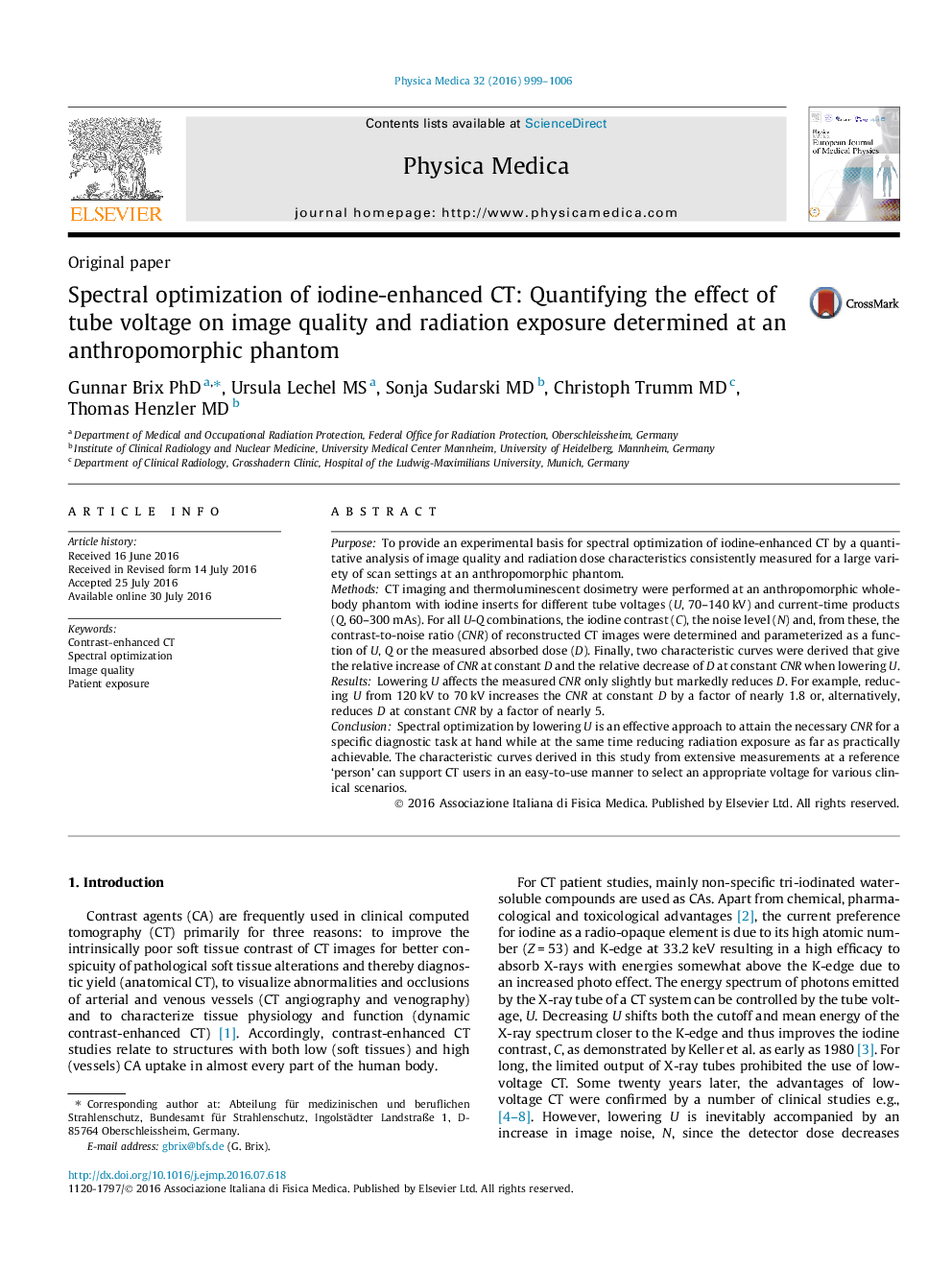| Article ID | Journal | Published Year | Pages | File Type |
|---|---|---|---|---|
| 1886829 | Physica Medica | 2016 | 8 Pages |
•An experimental basis for spectral optimization of iodine-enhanced CT is presented.•Mutually consistent measurements are performed at an anthropomorphic body phantom.•Data analysis does not use prior knowledge on noise characteristics.•Low voltage CT substantially reduces radiation exposure while maintaining contrast.•Characteristic curves are derived that help to optimize iodine-contrast CT.
PurposeTo provide an experimental basis for spectral optimization of iodine-enhanced CT by a quantitative analysis of image quality and radiation dose characteristics consistently measured for a large variety of scan settings at an anthropomorphic phantom.MethodsCT imaging and thermoluminescent dosimetry were performed at an anthropomorphic whole-body phantom with iodine inserts for different tube voltages (U, 70–140 kV) and current-time products (Q, 60–300 mAs). For all U-Q combinations, the iodine contrast (C), the noise level (N) and, from these, the contrast-to-noise ratio (CNR) of reconstructed CT images were determined and parameterized as a function of U, Q or the measured absorbed dose (D). Finally, two characteristic curves were derived that give the relative increase of CNR at constant D and the relative decrease of D at constant CNR when lowering U.ResultsLowering U affects the measured CNR only slightly but markedly reduces D. For example, reducing U from 120 kV to 70 kV increases the CNR at constant D by a factor of nearly 1.8 or, alternatively, reduces D at constant CNR by a factor of nearly 5.ConclusionSpectral optimization by lowering U is an effective approach to attain the necessary CNR for a specific diagnostic task at hand while at the same time reducing radiation exposure as far as practically achievable. The characteristic curves derived in this study from extensive measurements at a reference ‘person’ can support CT users in an easy-to-use manner to select an appropriate voltage for various clinical scenarios.
